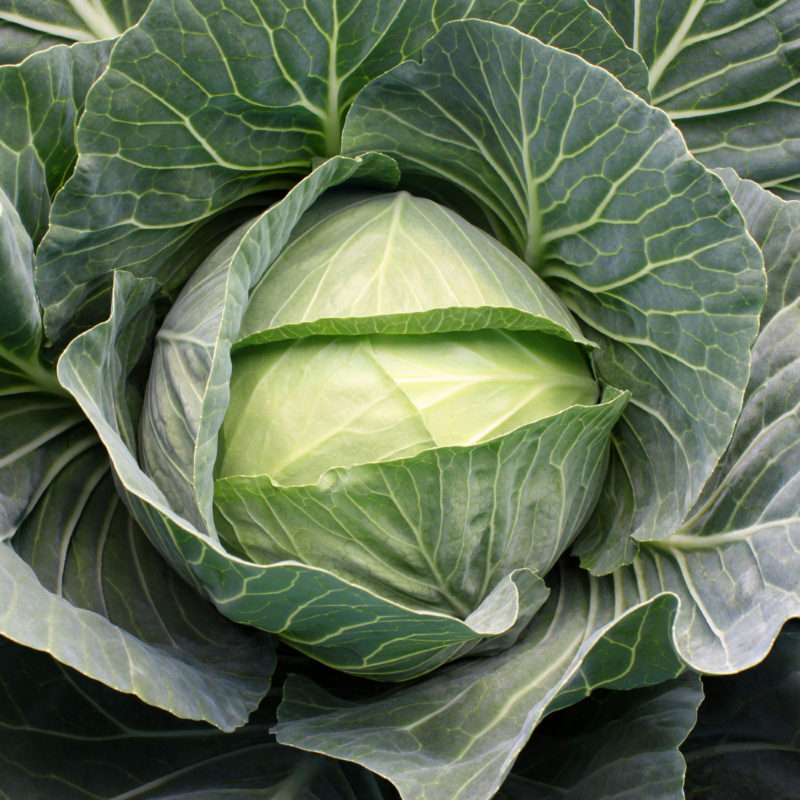There are no products listed under this category.

Cabbage is a cool-season vegetable suited to both spring and fall. It belongs to the cole crop family (Brassica oleracea), which includes broccoli, Brussels sprouts, cauliflower, collards, kale, and kohlrabi. The trick to growing cabbage is steady, uninterrupted growth. That means rich soil, plenty of water, and good fertilization.
Cabbage is a cool-season vegetable suited to both spring and fall. It belongs to the cole crop family (Brassica oleracea), which includes broccoli, Brussels sprouts, cauliflower, collards, kale, and kohlrabi. The trick to growing cabbage is steady, uninterrupted growth. That means rich soil, plenty of water, and good fertilization.
EARLY SPRING CROP: Mid-season and early varieties are used. Sow 2 seeds per cell in 50-72 cell plug flats, 3-4 seeds/in. in 20-row flats, or outdoor beds 1/4" deep. Seedlings should be ready to transplant in 4-6 weeks. Keep soil temperature over 75°F until germination, then reduce air temperature to about 60°F. Transplant outdoors 4-6 weeks after sowing, 12-18" apart in rows 18-36" apart. Cabbage prefers cooler growing temperatures, between 55-75°F, the optimum being 60-70°F, but will produce good crops under warmer, summer conditions.
FALL CROP: Choose midseason and storage varieties. Start seedlings as above in May and transplant to the garden in June-July. To ensure mature heads, seed the crop early in areas where heavy freezes occur early in fall.
WINTER CROP: Successful cabbage crops can be grown in mild winters (rarely below 32°F). Transplants can be set out from September to February in these regions.
Sow 3-4 seeds 12" apart, 1/2" deep, rows 24-36" apart, thinning to one plant in each group.
Early varieties may split or burst at maturity or from rapid new growth if rain or heavy irrigation follows a dry spell. Splitting may be partially avoided by slowing a plant's growth. To accomplish this, cultivate close to plants to sever some of the root system, or by slightly twisting the plant.
Adhere strictly to a preventive program including (1) long crop rotations with non-cruciferous crops, (2) clean starting mixes and outdoor seedbeds, and (3) strict sanitation practices.
Relatively young heads (still green and actively growing) store best. Ideal conditions are 32°F, at 95-98% relative humidity, with good air circulation. Store heads that are disease-free. From cool weather, spring transplanting. Subtract 10-14 days for late spring or early summer, warm weather transplanting. Add about 14 days for direct seeding.
Looking to get started by growing your own cabbage from seed? Click on the button below to get started.
Shop nowThere are no products listed under this category.